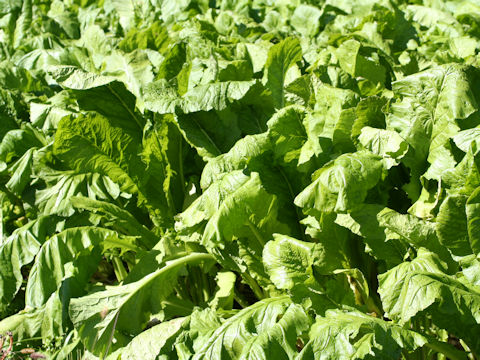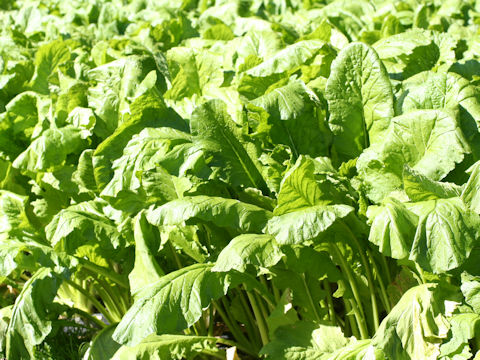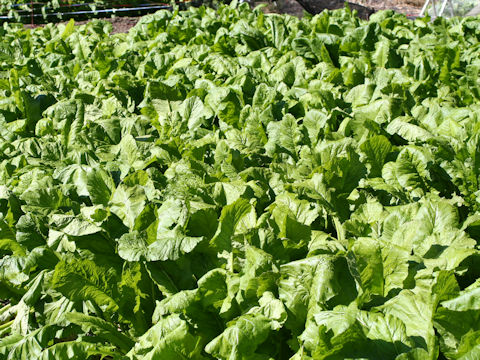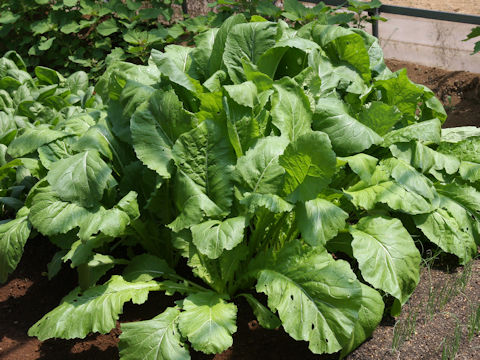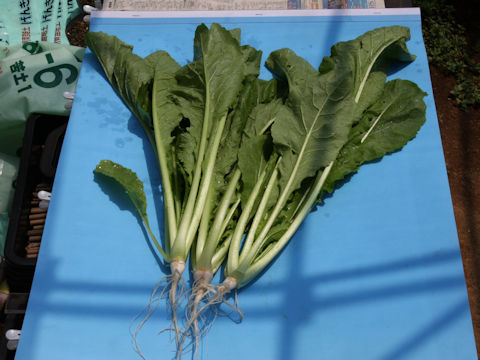
|
The "Nozawa-na" (Brassica rapa var. hakabura) belongs to Brassicaceae (the Mustard family). It is a biennial herb that is a variety of "turnip". It is said that the chief priest of Kenmei-ji Temple in Nozawa Onsen Village, in the northern part of Nagano Prefecture, brought back the seeds of "Tennouji-kabu" in the middle of the Edo period (1603-1868), and which mutated and became the current "Nozawa-na". However, genetic research has now denied the idea of a "turnip" variety, and it is thought to be another variety "ha-kabura" derived from "turnip". After World War II, it has been cultivated nationwide from Hokkaido to Kumamoto, mainly in Nagano and Niigata prefectures. The leaves are large, long ovate with a length of 60 to 90 cm. When this leaf is soaked, "glue" is produced, which is thought to be the effect of mucopolysaccharides.
Incidentally, the rape blossoms sung in the shoka "Oboro-Zukiyo" (pale moonlit night), are said to describe the yellow blossoms of the "Nozawa-na" for seeds grown in the hometown (former Toyoda-mura and vicinity) of Tatsuyuki Takano (1876-1947), who wrote the lyrics.
|

